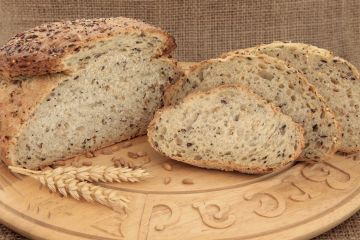Detox teas, fit teas, cleansing teas–if you have Instagram or Facebook, you’ve probably seen it peddled all over your feed. Everybody from social media models to big name celebrities have endorsed the so-called miracles of these teas, that they’re the key to good health, weight loss and looking slim. But what are the facts behind these supposedly sensational drinks? How effective are they? Could they be too good to be true?
The drink tea itself does have many health benefits and it’s evidenced by how it’s been a staple beverage in various cultures for centuries. Among the positive effects of regularly drinking tea are increasing your energy, boosting your mood, lowering blood pressure, and decreasing the risk of stroke and heart disease. Although, tea has been treated as more of a supplement than a cure-all. It cannot be a singular remedy for ailments, and, according to experts, a quick fix to rid the body of toxins.
These herbal teas are marketed to have purifying properties. Indeed, green and black teas are high in antioxidants, which aids in the body’s natural cleansing process. However, there have been no hard or science-backed evidence to the claims held by these detox teas. One common ingredient found in these teas is senna. This herbal laxative contains sennosides, which are chemicals with the ability to irritate the lining of the bowels. Senna is typically used in treating constipation.

People who swear by these detox teas probably saw considerable results in weight loss and this is because of the tea’s laxative properties. Although, what the body may be shedding is water weight and not so much actual fats. There’s the appearance and feeling of weight loss, but it’s easy to gain back this weight when the cleanse has ceased.
Regularly taking laxatives, especially when not prescribed, will yield you no health benefits at all. Food will quickly pass through your intestine and your body will not have enough time to absorb all the energy and nutrients it needs. Aside from extra trips to the bathroom, drinking detox teas can result in abdominal pain, cramps, bloating, gas, nausea, diarrhea, dehydration, and nutritional deficiencies. Furthermore, dependence on laxative teas can lead to eating disorders.
Overall, the research on detox teas is lacking for experts and can do more harm than good. But that doesn’t mean the idea of a “teatox” should be abandoned. It should, at least, be modified according to your needs and not be utilised as a meal replacement. Teas can certainly help keep your body “clean” and aid in weight loss, so long as you pair it with healthy meals and proper exercise.
Nutritionists recommend freshly brewing your own teas instead of buying from the shelves. If you must purchase detox teas, they advise you steer clear of those containing laxatives. Herbal teas like dandelion can truly be cleansing since it aids in liver function. Lemon or ginger, meanwhile, will reduce inflammation in the body while increasing your energy. Chamomile, mint and jasmine are high in vitamin C and can calm the system.








